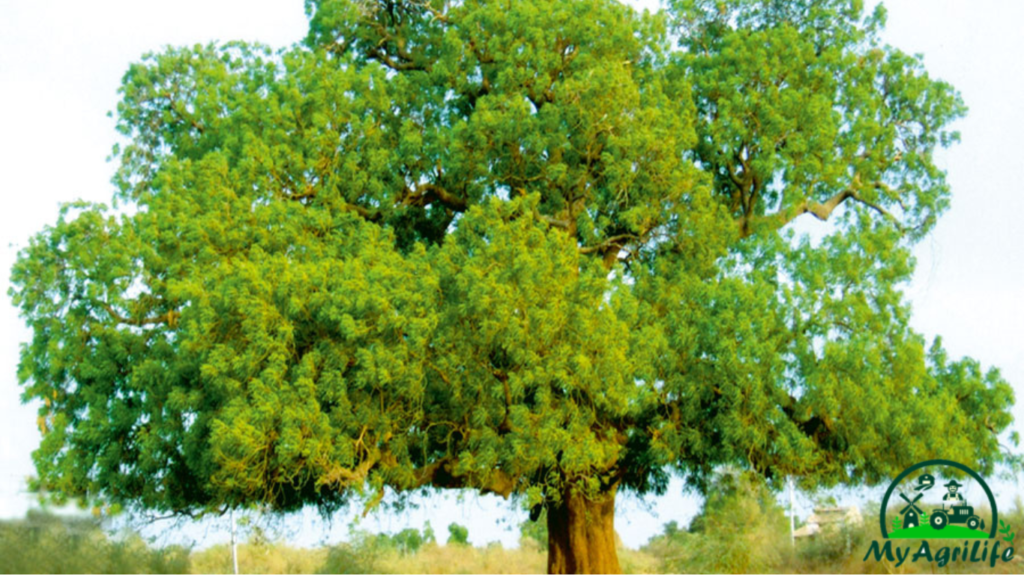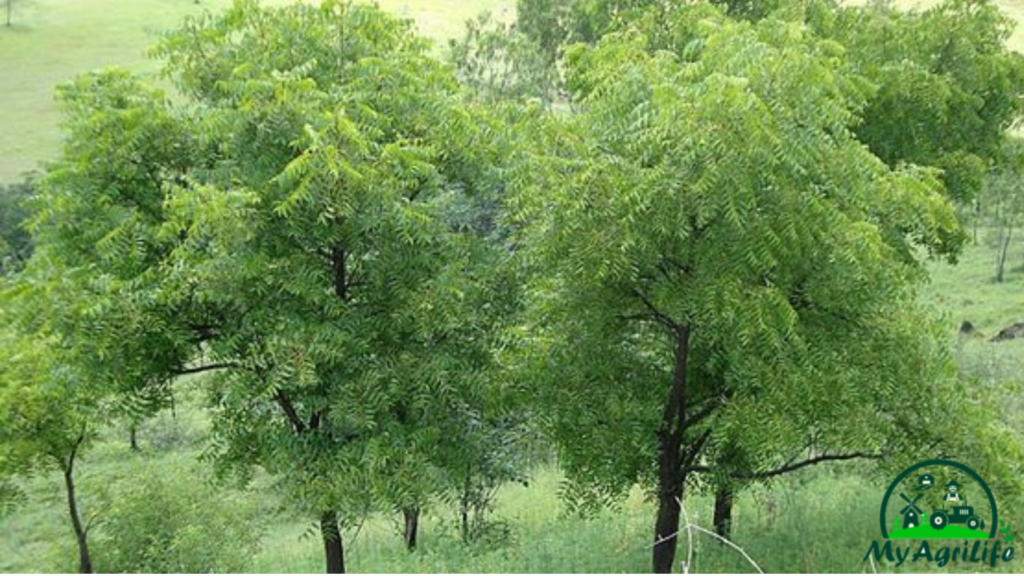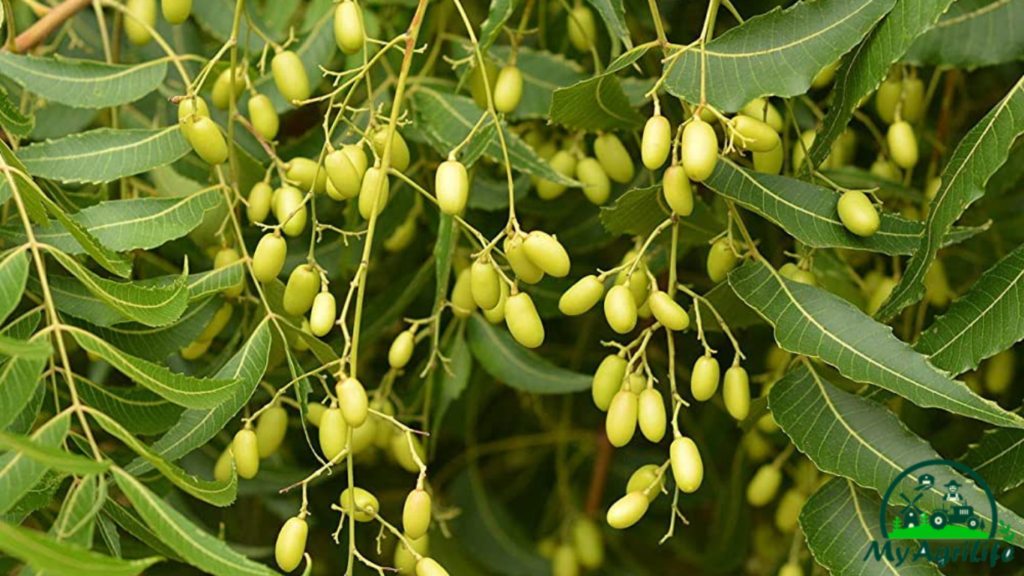
The neem tree (Azadirachta indica) is a tropical evergreen tree that is native to the Indian subcontinent. It is known for its medicinal properties and has been used in traditional Ayurvedic medicine for thousands of years.
The neem tree has many uses, and its leaves, bark, and oil are used for medicinal purposes. The leaves are commonly used to treat skin disorders such as acne, eczema, and psoriasis. Neem oil is used as an insecticide, and it is also known to have antifungal and antibacterial properties. The bark of the neem tree is used to treat fever, nausea, and vomiting.
In addition to its medicinal properties, the neem tree is also used in the manufacture of soaps, shampoos, and cosmetics. The tree is also used in traditional Indian medicine for its ability to purify the air and to repel insects.
Overall, the neem tree is an important part of traditional Indian medicine and is widely used for its many health benefits.
Seed Specification Neem Tree
The seed of the neem tree (Azadirachta indica) is a crucial part of the propagation process. Here are some specifications of the neem tree seed:
1.Size and shape: Neem seeds are about 1.5-2 cm long and 1-1.5 cm wide. They are oval-shaped and have a ridged texture.
2.Color: The color of neem seeds varies from light brown to dark brown. The color may also vary depending on the maturity of the seed.
3.Weight: The weight of a single neem seed is approximately 1.5-2 grams.
4.Germination rate: The germination rate of neem seeds is usually between 50-70%.
5.Seed viability: Neem seeds can remain viable for up to two years if stored properly.
6.Seed collection: Neem seeds are typically collected during the months of April and May.
7.Seed treatment: Before planting, neem seeds should be soaked in water for 12-24 hours to enhance germination. The seeds can also be treated with fungicide to prevent disease.
It is important to note that neem seeds should only be sourced from reputable suppliers to ensure quality and authenticity.
Land Preparation & Soil Health Neem Tree
Land preparation and soil health are important factors in the successful growth and development of neem trees. Here are some considerations:

1.Site selection: Select a site with well-draining soil that receives plenty of sunlight. Neem trees can grow in a variety of soil types, but they prefer sandy loam soils with a pH range of 6.2 to 7.0.
2.Soil testing: Conduct a soil test to determine the soil’s nutrient content and pH level. Based on the test results, you may need to amend the soil with organic matter or other fertilizers.
3.Land preparation: Clear the land of any debris and level the soil. Plow or till the soil to a depth of at least 30 cm to break up any compacted soil and create a loose planting bed.
4.Organic matter: Incorporate organic matter such as compost or well-rotted manure into the soil. Organic matter helps improve soil structure, water-holding capacity, and nutrient availability.
5.Fertilization: Apply a balanced fertilizer, such as 10-10-10, to the soil before planting. Neem trees also respond well to foliar fertilization, which involves spraying a liquid fertilizer directly onto the leaves.
6.Mulching: Mulching around the base of neem trees can help conserve soil moisture, suppress weed growth, and improve soil fertility over time.
7.Irrigation: Neem trees require regular watering during the first few years of growth. Irrigate deeply and infrequently to encourage deep root growth.
By following these guidelines for land preparation and soil health, you can help ensure the healthy growth and development of neem trees.
Crop Spray & Fertilizer Specification Neem Tree
Crop spray and fertilizer applications can play an important role in promoting the growth and health of neem trees. Here are some specifications:
1.Neem oil spray: Neem oil is an effective organic insecticide and fungicide that can help protect neem trees from pests and diseases. It is applied as a spray to the foliage and should be used at a concentration of 0.5 to 2% in water.
2.Foliar fertilizer: Neem trees can benefit from foliar fertilization, which involves applying fertilizer directly to the leaves. A balanced foliar fertilizer, such as 20-20-20, can be applied every two to three weeks during the growing season.
3.Organic fertilizer: Neem trees respond well to organic fertilizers, such as compost or well-rotted manure. These should be applied to the soil around the base of the tree, avoiding contact with the trunk.
4.Nitrogen application: Neem trees require moderate amounts of nitrogen, which promotes vegetative growth. A nitrogen fertilizer, such as urea or ammonium sulfate, can be applied to the soil in split doses during the growing season.
5.Micronutrient application: Neem trees may require additional micronutrients, such as zinc or iron, depending on the soil type and nutrient availability. These can be applied as a foliar spray or as a soil amendment.
6.Timing of application: Fertilizer and spray applications should be timed to coincide with the neem tree’s growth stages. For example, foliar fertilizer should be applied during the active growth period, while neem oil spray should be applied when pests or diseases are present.
It is important to follow the recommended application rates and timings to avoid over-fertilization or damage to the neem tree. Additionally, always use high-quality fertilizers and sprays to ensure the best results.
Weeding & Irrigation Neem Tree
Weeding and irrigation are important maintenance practices for neem trees. Here are some specifications:
1.Weeding: Neem trees require weed control during the first few years of growth to prevent competition for water and nutrients. Hand-weeding is the preferred method, as it is less likely to damage the tree’s roots than mechanical methods. Mulching around the base of the tree can also help suppress weed growth.
2.Irrigation: Neem trees require regular watering during the first few years of growth to establish a strong root system. The frequency of irrigation will depend on the soil type, climate, and rainfall. Irrigate deeply and infrequently to encourage deep root growth. Mature neem trees are drought-tolerant and do not require as much water.
3.Irrigation method: Neem trees can be irrigated using a variety of methods, including drip irrigation, sprinklers, or flood irrigation. Drip irrigation is the most efficient method, as it delivers water directly to the tree’s root zone.
4.Timing of irrigation: Watering should be timed to avoid waterlogging the soil or causing excess moisture around the base of the tree, which can lead to root rot. Watering should be done early in the morning or late in the afternoon to avoid evaporation and maximize absorption.
5.Monitoring: Monitor soil moisture levels regularly to ensure that the neem tree is receiving adequate water. Signs of under-watering include wilting leaves and yellowing foliage, while over-watering can cause root rot and stunted growth.
By following these guidelines for weeding and irrigation, you can help ensure the healthy growth and development of neem trees.
Harvesting & Storage Neem Tree
Harvesting and storage are important aspects of neem tree cultivation, as they determine the quality of the neem products obtained. Here are some specifications:

1.Harvesting: Neem trees can be harvested once they reach maturity, which is typically after 3 to 5 years of growth. The optimal time for harvesting is during the dry season when the neem fruits have ripened and fallen to the ground. The fruits are then collected, and the seeds are extracted.
2.Seed extraction: The seeds can be extracted manually by cracking open the neem fruit, or using mechanical methods such as crushing or pressing. The extracted seeds are then dried in the sun for several days until the moisture content is reduced to 6-7%.
3.Storage: Neem seeds should be stored in a cool, dry place, away from direct sunlight, to prevent moisture buildup and insect infestation. It is best to store them in airtight containers, such as sealed plastic bags or metal cans. Properly stored neem seeds can remain viable for up to two years.
4.Oil extraction: Neem oil is extracted from the seeds using mechanical methods such as pressing or solvent extraction. The oil is then filtered and purified to remove any impurities.
5.Product formulation: Neem oil can be used directly as a pesticide or added to other products such as shampoos, soaps, and cosmetics. The quality of the neem products obtained will depend on the quality of the seeds and the extraction method used.
By following these guidelines for harvesting and storage, you can help ensure the quality of the neem products obtained from your neem trees.
Conclusion
Neem tree farming can be a profitable and sustainable enterprise for farmers, as neem trees have a wide range of uses and are in high demand for their medicinal, cosmetic, and agricultural properties. However, successful neem tree farming requires careful attention to land preparation, soil health, irrigation, fertilization, and pest management.
In summary, here are some key points to consider for successful neem tree farming:
Choose a suitable location with well-draining soil and adequate sunlight.
Prepare the land by removing weeds, tilling the soil, and adding organic matter.
Test the soil to determine its nutrient content and pH, and adjust as needed.
Irrigate the trees regularly during the establishment period and use water efficiently.
Fertilize the trees with a balanced fertilizer and supplement with micronutrients as needed.
Control pests and diseases using organic methods such as neem oil spray.
Harvest the neem fruits during the dry season and store the seeds properly.
Extract the neem oil using mechanical methods and use or sell the oil directly or in value-added products.
By following these guidelines, farmers can produce high-quality neem products and contribute to sustainable agriculture and rural development.
References
1.National Medicinal Plants Board (NMPB): The NMPB is a government body in India that promotes the cultivation and conservation of medicinal plants, including neem. Their website provides guidelines and resources on neem farming practices, cultivation techniques, and value addition. Visit their website at: http://www.nmpb.nic.in/
2.International Society of Neem Research (ISNR): ISNR is an international organization dedicated to neem research and development. Their website offers access to research papers, publications, and information on neem farming practices. Visit their website at: http://www.isnr-neem.org/
3.International Neem Foundation (INF): The INF is a non-profit organization that focuses on promoting the sustainable use of neem. Their website provides resources on neem farming, including cultivation methods, pest management, and market trends. Visit their website at: http://www.neemfoundation.org/









